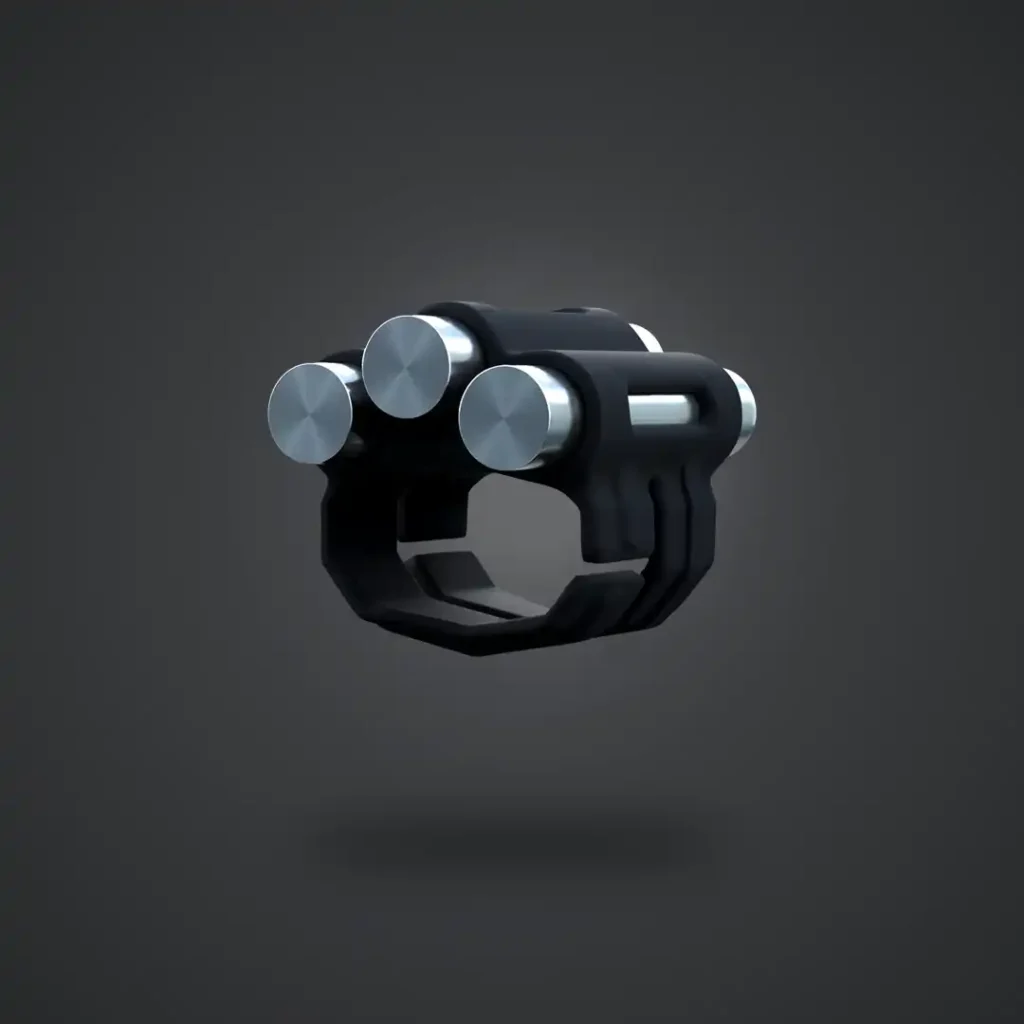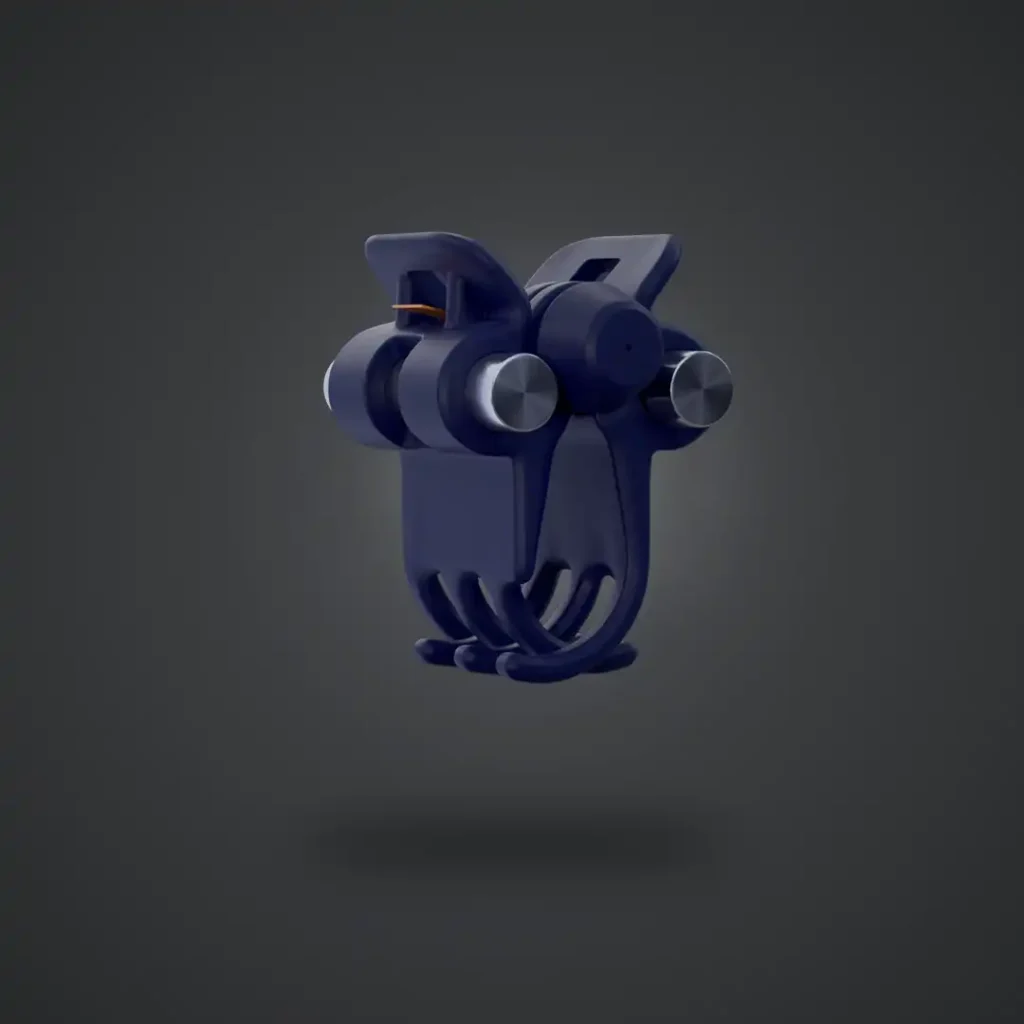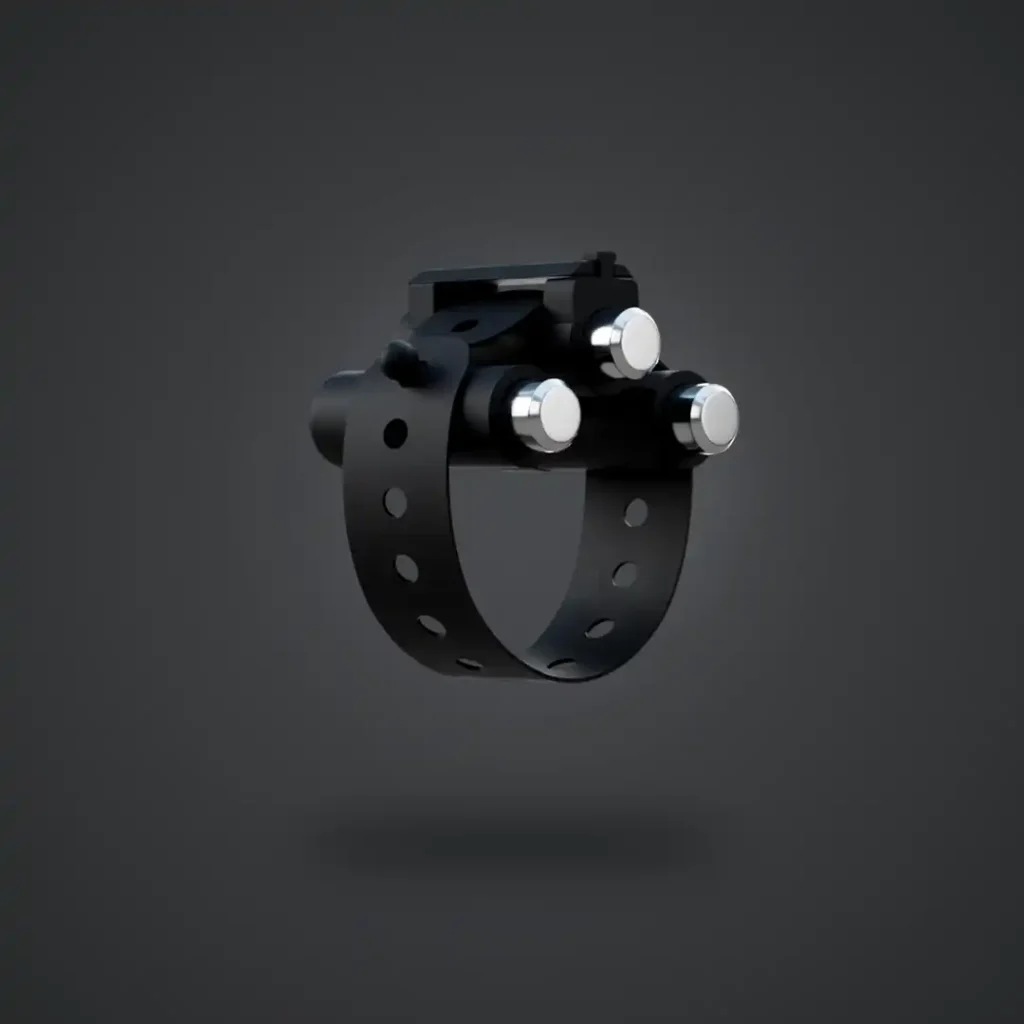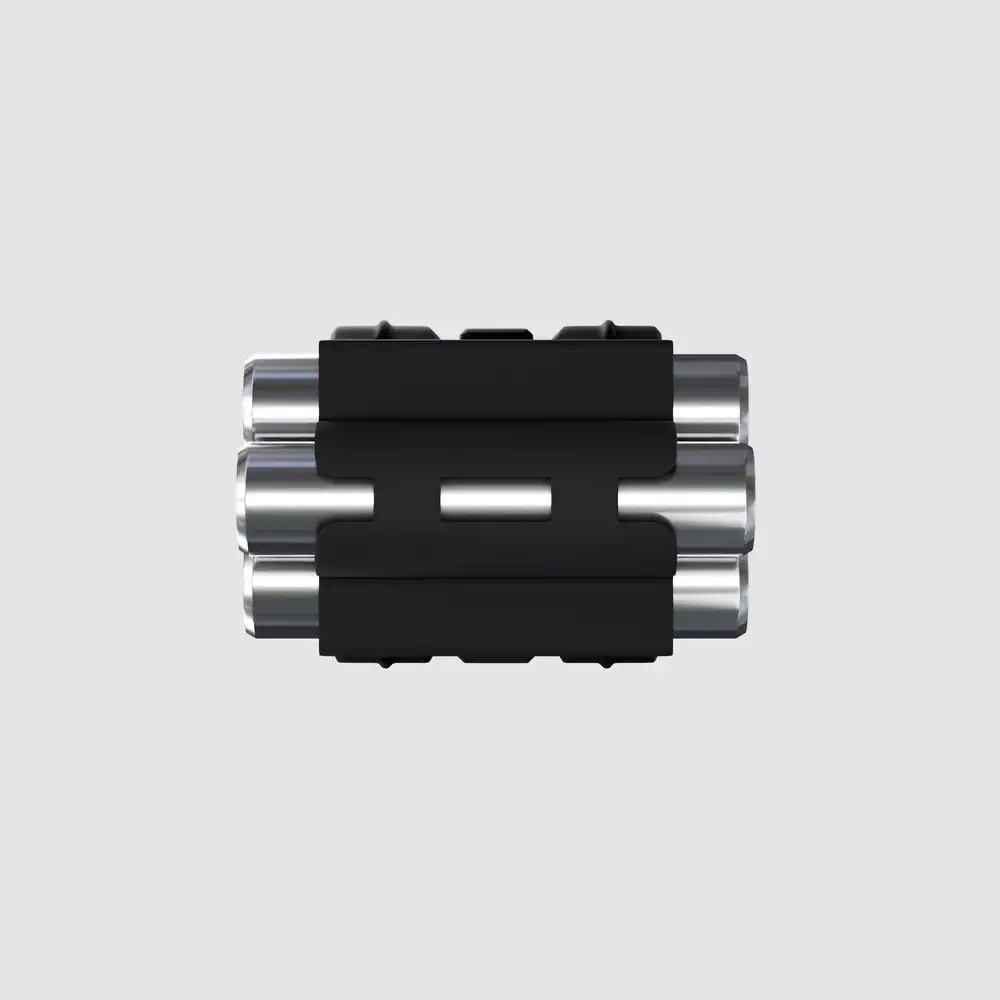Boost Your Basketball Game With Finger Weights
Ever wondered how to improve your basketball skills beyond traditional drills? Finger weights offer a unique solution. These small, wearable devices can enhance your grip strength, ball control, and shooting accuracy. This article explores how finger weights work, their benefits for basketball players, and tips for incorporating them into your training routine. By the end, you’ll understand why many athletes are turning to this innovative tool to boost their performance on the court.
Key Takeaways
- Finger strength significantly impacts shooting accuracy, ball handling, and control in basketball
- Finger weights help players build endurance and improve performance across various aspects of the game
- Proper sizing and fit of finger weights are crucial for comfort and effective training
- Progressive training plans with finger weights can gradually build strength and prevent injuries
- Both professional and recreational players have seen notable improvements from incorporating finger weight training
Understand the Importance of Finger Strength for Basketball Performance

Finger strength plays a crucial role in basketball performance. It impacts shooting accuracy, ball handling, and control. Players can enhance their endurance using finger weights, a training tool gaining popularity in leagues like the VTB United League and National Basketball League. Shop Now. This section explores how finger strength influences various aspects of the game, from Alabama to Lithuania, and discusses the price-performance benefits of finger weights. More Articles.
How Finger Strength Influences Shooting Accuracy
Basketball players from the Atlanta Hawks to the Minnesota Timberwolves understand that finger strength directly impacts shooting accuracy. Strong fingers provide better control and touch on the ball, allowing for more precise shots and improved proprioception during release. For more articles on improving your game, consider using FingerWeights. Don’t forget to shop now for the best training equipment.
Studies from Los Angeles-based sports scientists have shown that increased finger strength leads to better shot consistency, especially in high-pressure situations. By using finger weights in training, players can develop the muscular endurance needed to maintain shooting form throughout a game, resulting in higher shooting percentages.
The Role of Finger Strength in Ball Handling and Control
Finger strength plays a vital role in ball handling and control on the basketball court. From Tel Aviv to California, players who focus on developing their finger muscles gain an edge during playoffs. Strong fingers allow for better grip on the ball, enabling quick dribbles and precise passes even as the game clock winds down.
Basketball pros use finger weights to enhance their ball control skills. This training method improves finger dexterity and stamina, crucial for maintaining possession during high-pressure situations. Players who incorporate finger strength exercises into their regimen often see improvements in their performance on-site during games:
Building Endurance With Finger Weights
Basketball players, from Kentucky to Minneapolis, can build finger endurance using finger weights during their training sessions. These small, wearable weights challenge the muscles in the fingers and hands, improving strength and stamina over time. Players like Luka Dončić of the Dallas Mavericks have incorporated finger weight exercises into their routines to enhance their performance on the court.
Teams across the league, including the Charlotte Hornets and Virginia-based squads, have seen the benefits of finger weight training. By consistently using these tools, players develop the endurance needed to maintain precise ball control throughout intense games. The increased finger strength also contributes to better shooting accuracy and more effective defensive plays:
- Improved ball handling in late-game situations
- Enhanced shooting consistency in the fourth quarter
- Reduced fatigue-related turnovers
- Better rebounding grip in overtime periods
Explore the Benefits of Using Finger Weights for Training
Buy Finger Weights
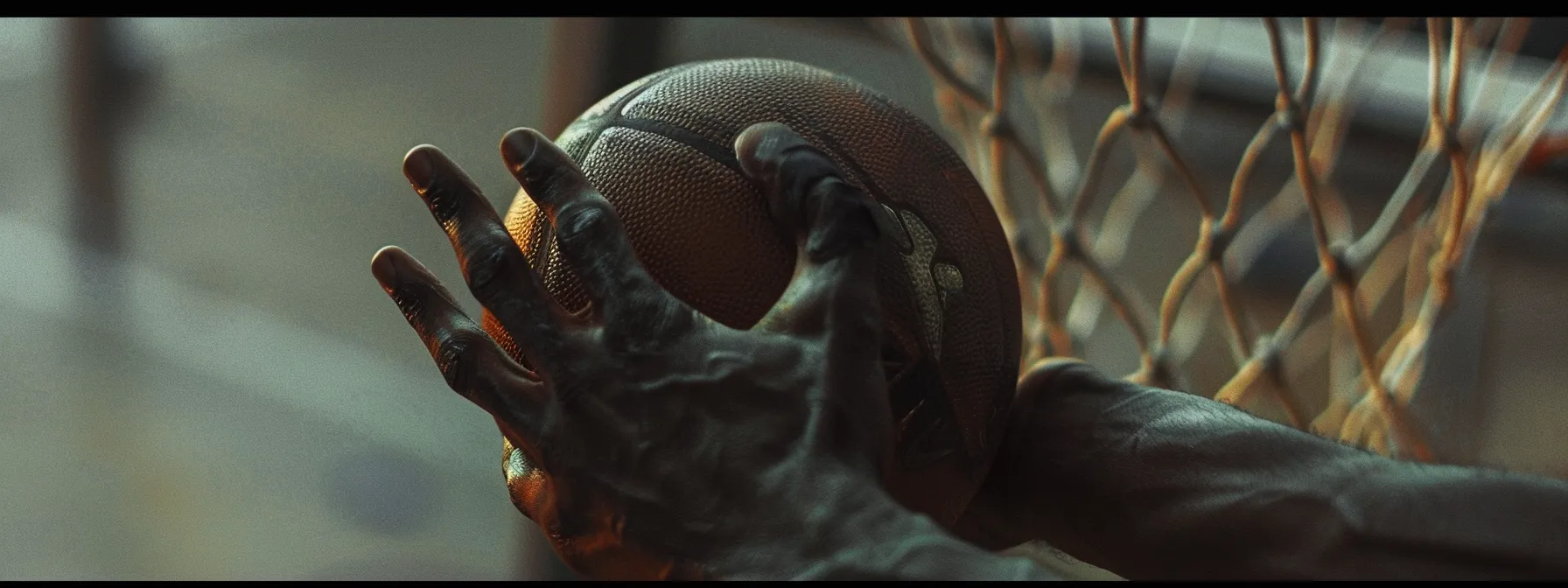
Finger weights offer basketball players a unique way to enhance their game. From Miami to Wisconsin, athletes use these tools to boost grip strength for better ball control, improve dexterity for quick passes and dribbles, and prevent common hand injuries. Whether preparing for a slam dunk in an exhibition game or training in Lebanon, finger weights can be a game-changer for players at all levels.
Enhancing Grip Strength for Better Ball Control
Finger weights help basketball players enhance their grip strength, leading to better ball control on the court. From rookies in Indiana to seasoned pros in Angola, athletes use these tools to improve their handling skills during physical education sessions. The increased grip strength allows players to maintain a firm hold on the ball, even during intense gameplay or when facing tough defensive pressure.
By consistently training with finger weights, players develop the muscular endurance needed for precise ball control throughout a game. This improved grip strength benefits various aspects of play, from secure dribbling to accurate passing. Even committee members overseeing basketball programs recognize the value of incorporating finger weight exercises into training regimens to boost overall performance and reduce the risk of turnovers.
Improving Dexterity for Quick Passes and Dribbles
Finger weights help basketball players improve dexterity for quick passes and dribbles. Players like Giannis Antetokounmpo of the Milwaukee Bucks use these tools to enhance their hand speed and coordination. From Illinois to Seattle, athletes in the National Collegiate Athletic Association (NCAA) incorporate finger weight exercises to develop precise ball control.
The Detroit Pistons and other NBA teams recognize the value of finger weight training for improving dexterity. By regularly using these weights, players can execute faster crossovers, behind-the-back passes, and no-look dishes. The benefits of improved dexterity extend beyond offense, helping players on defense as well:
- Quicker steals and deflections
- More effective shot contests
- Improved rebounding technique
- Enhanced ability to disrupt passing lanes
Preventing Common Hand Injuries Among Players
Finger weights play a crucial role in preventing common hand injuries among basketball players, from the Utah Jazz to the Baltimore Ravens’ off-season training. By strengthening the muscles and tendons in the fingers and hands, these weights help reduce the risk of sprains, strains, and fractures that often occur during intense gameplay. Even players from Egypt’s national team have incorporated finger weight exercises into their routines to enhance hand resilience.
Regular use of finger weights can also improve overall hand health, benefiting athletes across various sports, including the National Hockey League. By building strength and flexibility in the fingers, players are better equipped to handle the physical demands of basketball, whether they’re competing in England’s local leagues or professional circuits. This proactive approach to injury prevention can lead to longer, healthier careers for basketball players at all levels.
Selecting the Right Finger Weights for Basketball Training

Selecting the right finger weights is crucial for basketball players, from Phoenix Mercury stars to free agents like Joel Embiid. This section explores different types of finger weights, how to choose based on skill level, and the importance of size and fit for comfort. Whether training in Maryland or with the Houston Rockets, players can find the perfect finger weights to enhance their game.
Different Types of Finger Weights Available
Basketball players can choose from various finger weights to enhance their skills. Adjustable weights allow athletes to customize resistance as they progress, while fixed-weight options provide consistent training for specific muscle groups. Some finger weights incorporate materials that absorb sweat, reducing discomfort during intense SEC matchups or Big Ten Network broadcasts.
Specialized finger weights designed for pain management help players recovering from injuries. These weights often feature ergonomic designs to minimize strain while improving finger strength. Basketball professionals use these tools to maintain their performance during grueling seasons, addressing pain issues without compromising their training regimen.
How to Choose Finger Weights Based on Your Skill Level
Basketball players should choose finger weights based on their current skill level and training goals. Beginners might start with lighter weights, while advanced players like Ben Simmons could opt for heavier options. Players from the Dominican Republic to Italy use finger weights to improve their game, adapting their choices as they progress.
Skill level also influences the type of finger weights selected. New Jersey-based players new to finger weight training might prefer adjustable models, allowing them to increase resistance gradually. Experienced athletes, including those in fantasy baseball leagues, often choose fixed-weight options for consistent, targeted training. The right choice helps players at all levels enhance their performance on the court:
- Beginners: Light, adjustable weights
- Intermediate: Medium-weight, versatile options
- Advanced: Heavy, sport-specific weights
- Professional: Custom-designed finger weights
Considering Size and Fit for Optimal Comfort
Selecting the right size and fit for finger weights is crucial for basketball players, from the Philadelphia 76ers to teams in San Antonio. Proper sizing ensures optimal comfort during training and gameplay, allowing players to focus on improving their skills rather than adjusting ill-fitting equipment. Even athletes participating in flag football in the off-season benefit from well-fitted finger weights that complement their hand size and shape.
Basketball players in Serbia and around the world understand that comfortable finger weights lead to more effective training sessions. When choosing finger weights, athletes should consider factors such as finger circumference, hand size, and personal comfort preferences. A well-fitted set of finger weights allows for natural movement and reduces the risk of chafing or discomfort during intense drills or while practicing the rules of basketball:
- Measure finger circumference for accurate sizing
- Choose adjustable options for growing athletes
- Consider grip texture for secure placement
- Test different sizes to find the most comfortable fit
How to Incorporate Finger Weights Into Your Training Routine
Basketball players can enhance their game by incorporating finger weights into their training routine. This section covers simple exercises for beginners, progressive plans for building strength, and ways to combine finger weights with other equipment. Whether preparing for a game in Oregon or training with the Utah Jazz, these techniques can benefit players at all levels, including those transitioning from baseball or preparing for the SAT. Even Purdue athletes can improve their performance with these finger weight strategies.
Simple Exercises to Get Started
Basketball players can start their finger weight training with simple exercises like finger extensions and flexions. These basic movements, practiced by athletes from Latvia to Milwaukee, help build foundational strength and dexterity. Players can perform these exercises while watching San Antonio Spurs games or during study breaks at Purdue University.
Another easy exercise involves pinching and holding the finger weights for increasing durations. This technique improves grip strength and endurance, beneficial for players at all levels. Teams often include these exercises in their training routines, with some even shipping finger weights to players during off-season to maintain consistent practice.
Progressive Training Plans for Strength Building
Basketball players can follow progressive training plans to build strength with finger weights. These plans start with lighter weights and gradually increase resistance, allowing athletes to develop strength over time. Players from the Philippines to Oklahoma use this approach to improve their chances of becoming the most valuable player on their team.
A typical progressive plan might involve using finger weights during specific drills, such as dribbling exercises or shooting practice. As players become stronger, they can increase the weight or duration of use, enhancing their ability to make crucial buzzer beaters. This gradual progression helps prevent injury while maximizing strength gains.
Combining Finger Weights With Other Equipment
Basketball players can enhance their training by combining finger weights with other equipment. Athletes in Georgia often use finger weights alongside resistance bands to improve hand strength and overall performance. This combination helps players develop the quick hands needed for intercepting passes, much like Larry Bird’s legendary defensive skills.
Integrating finger weights with dribbling drills using specialized basketballs can further boost hand dexterity. Canadian players have adopted this technique, inspired by the game’s origins in “duck on a rock.” Some teams even incorporate finger weight exercises into their insurance-mandated injury prevention programs, recognizing the potential for reduced hand and finger injuries during intense gameplay.
Buy Finger Weights
Common Mistakes to Avoid When Using Finger Weights
Basketball players, from Nigeria to the Basketball Africa League, should avoid common pitfalls when using finger weights. Overtraining can hinder performance, while improper technique may lead to injury. Skipping warm-ups and cool-downs is another mistake that even softball players transitioning to basketball should avoid. By addressing these issues, athletes can maximize the benefits of finger weight training and become better leaders on the court.
Overtraining and Its Effects on Performance
Basketball players using finger weights should avoid overtraining, which can negatively impact their performance. Excessive use of finger weights can lead to fatigue, decreased grip strength, and reduced shooting accuracy. Even fantasy basketball enthusiasts and NBA Junior participants need to be cautious about overworking their fingers and hands.
To prevent overtraining, athletes should incorporate rest days into their finger weight routines. This allows for proper recovery and helps maintain peak performance during tournaments and NBA TV appearances. Oklahoma City players and coaches often emphasize the importance of balanced training schedules to optimize finger strength without risking burnout:
- Limit finger weight sessions to 2-3 times per week
- Alternate between light and heavy training days
- Monitor hand fatigue and adjust workouts accordingly
- Integrate finger exercises into overall basketball drills
Ignoring Proper Technique During Exercises
Basketball players often overlook proper technique when using finger weights, which can lead to ineffective training and potential injuries. Isiah Thomas, known for his exceptional ball-handling skills, emphasized the importance of correct form during finger exercises to maintain hand health. Players should focus on controlled movements and proper alignment to maximize the benefits of finger weight training.
Ignoring proper technique can strain the finger joints and compromise the overall health of a player’s hands. Kobe Bryant, who used finger weights as part of his training system, stressed the importance of gradual progression and correct form to avoid overuse injuries. By following the guidance of experts like Maurice Podoloff, players can ensure they’re using finger weights effectively to enhance their performance on the court.
Skipping Warm-Up and Cool-Down Stretches
Basketball players often underestimate the importance of warm-up and cool-down stretches when using finger weights. This oversight can lead to reduced performance during free throws and increase the risk of hand injuries. Even in Toronto, where the Basketball Association of America’s influence is strong, players sometimes skip these crucial steps, potentially compromising their game.
Proper warm-up and cool-down routines prepare the fingers and hands for the stress of weight training, much like in tennis. These stretches, an essential invention in sports training, help improve flexibility and circulation, enhancing overall finger strength and dexterity. By incorporating these routines, players can maximize the benefits of finger weight exercises and maintain hand health throughout their basketball careers.
Success Stories of Players Who Used Finger Weights

Finger weight training has transformed basketball performance across all levels. Professional athletes, including some from the Alabama Crimson Tide, share their success stories. Case studies compare player stats before and after incorporating finger weights. Even recreational players in Dallas and Indianapolis have seen improvements. These stories highlight how finger weights can boost skills for players at any level.
Testimonials From Professional Athletes
Professional athletes have shared their success stories with finger weights, highlighting improved performance and reduced injury risk. NBA stars from Madrid to France have incorporated these tools into their training regimens, seeing significant gains in ball control and shooting accuracy. During collective bargaining negotiations, player representatives often cite the benefits of finger weight training as a factor in extending careers and enhancing overall gameplay.
Photos of athletes using finger weights have become common on social media, showcasing their dedication to hand strength development. Many players credit finger weight exercises for helping them recover from hand injuries faster and return to peak performance. This training method has gained popularity across international leagues, with players from various countries adopting it to stay competitive in the global basketball arena.
Case Studies on Performance Improvement
Case studies from Germany and Belgium have shown significant performance improvements in basketball players who incorporated finger weights into their training routines. One study tracked a group of professional players over a six-month period, revealing an average 12% increase in shooting accuracy and a 15% improvement in ball handling skills. These results caught the attention of basketball networks across Europe, leading to widespread adoption of finger weight training techniques.
In Nebraska, a high school basketball team experimented with finger weights during their off-season training, borrowing techniques from lacrosse players known for their hand strength. The team saw remarkable improvements in their overall performance, with players reporting better ball control and reduced fatigue during long games. This success story spread through local sports networks, inspiring other schools to implement similar training programs.
How Recreational Players Benefit From Finger Weight Training
Recreational basketball players across Africa and Spain have seen significant improvements in their game after incorporating finger weight training. These amateur athletes, who often juggle their passion for basketball with other sports like association football, have reported enhanced ball control and shooting accuracy. Local commissioners have noticed the positive impact on recreational leagues, with data showing a 10% increase in player performance metrics.
Even casual players who use finger weights during their off-court time have experienced benefits. Many recreational athletes in Spain have found that incorporating finger exercises while watching professional games or during work breaks has led to noticeable improvements in their on-court skills. This accessible training method has made it easier for recreational players to enhance their game without requiring extensive time commitments or expensive equipment.
Frequently Asked Questions
How do finger weights improve basketball performance?
Finger weights enhance basketball performance by strengthening hand muscles, improving grip strength, and refining dexterity. This targeted training translates to better ball control, more accurate shooting, and increased stamina during gameplay. Players can execute precise passes and maintain control in high-pressure situations, giving them a competitive edge on the court.
What factors should I consider when choosing finger weights for basketball training?
When selecting finger weights for basketball training, consider the weight, comfort, adjustability, and durability. Choose weights that challenge your fingers without hindering movement. Ensure they fit securely and allow for proper grip on the ball. Look for high-quality materials that can withstand frequent use during intense training sessions.
How often should I use finger weights in my training routine?
Finger weights can be used 2-3 times a week for optimal results. Start with short sessions of 5-10 minutes and gradually increase duration as your strength improves. Allow rest days between sessions to prevent overuse and promote muscle recovery.
Are there any risks associated with using finger weights for basketball?
Finger weights can pose risks for basketball players, potentially affecting shooting accuracy and ball handling. Overuse may lead to muscle strain or joint stress. It’s crucial to use them cautiously, under proper guidance, and gradually increase weight to avoid injuries while training.
Can finger weights help with ball handling and shooting accuracy?
Finger weights can enhance ball handling and shooting accuracy by strengthening hand muscles and improving finger control. Regular use can increase dexterity, grip strength, and fine motor skills, which are crucial for precise ball handling and accurate shooting in various sports like basketball or football.
Conclusion
Finger weights offer basketball players a powerful tool to enhance their performance, improving shooting accuracy, ball handling, and overall hand strength. By incorporating these specialized training aids into their routines, athletes at all levels can develop the finger dexterity and endurance needed to excel on the court. Proper selection and use of finger weights, combined with progressive training plans and attention to technique, can lead to significant improvements in gameplay and reduced risk of hand injuries. As demonstrated by success stories from professional and recreational players alike, finger weight training has become an essential component of modern basketball training, helping athletes unlock their full potential and elevate their game to new heights.
